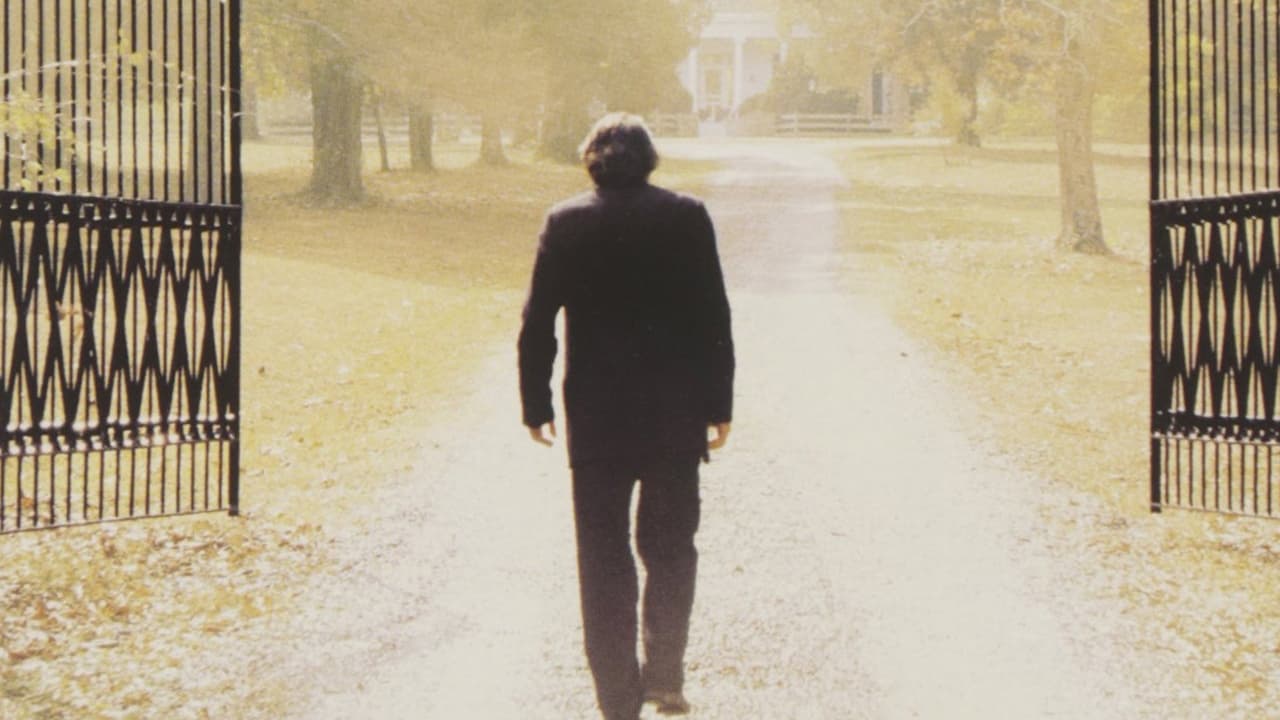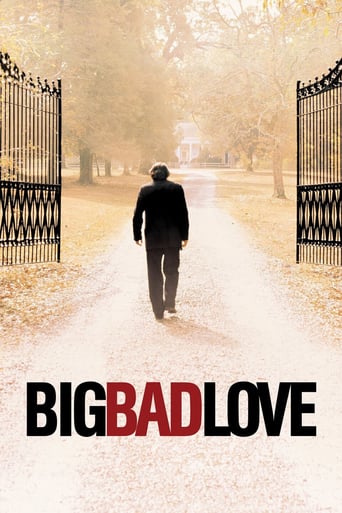

Some other reviewers comment positively about this film. I will not mince words. I can't stoop so low. I have to tell the truth about it. This film was a total waste of my time from beginning until the end.Others write that this film is Surreal. Yes it is. They accurately report about the actors and the sadness of much of the story, the drunken writer, his continuing battles with his ex-wife, his deadbeat best friend.Where these other writers fall short is their failure to mention that the story line and the director develop no connection between the audience and the characters. No sympathy. All these characters are just pitiful people, failures on different levels but all failures. Just bums. Gritty, yes. Believable, no. They say it is painful, yes. But then they falsely claim there are rewards. There are none. One writer admits that it is uneven. Understatement. There are creative "dreams" or day dreams, but they do more to interrupt the flow of the movie, than promote it. The day dreams are the best part, so it may be more accurate to say the movie interrupts the flow of the dream sequences.There is nothing wonderful about this movie. Don't waste your time. If it comes in your TV guide, turn on a different channel, any channel. Or turn the set off.
... View MoreI enjoyed this movie, not for what Howard and Winger left in from the original literary fiction of Larry Brown, but for what they brought to the story. Winger and Howard are big fans of Brown and the adaptation is brilliant in sections. If this film put you to sleep, it's because you were never awake.The film version of Big Bad Love is based not on the entire collection of short stories in the book of the same title, but only on the novella that ends the collection titled 92 Days. It follows the exploits of an aspiring writer named Leon Barlow and the people that surround him for a period of ninety two days. And the screenwriter/director Arliss Howard chose to interpret the world of Barlow by presenting portions of the original fiction through the use of non-Diegetic sound. The distinction between diegetic or non-diegetic sound depends on our understanding of the conventions of film viewing and listening. Certain sounds are represented as coming from the story world, while others are represented as coming from outside the space of the story events. Diegetic sound is any sound presented as originated from a source within the films world. That is, sound whose source is visible on the screen or whose source is implied to be present by the action of the film include voices of characters, sounds made by objects in the story and music represented as coming from instruments in the story space. Non-diegetic sound is represented as coming from a source outside story space. Sound whose source is neither visible on the screen nor has been implied to be present in the action such as narrator's commentary, sound effects which is added for the dramatic effect and mood music. A film with diegetic and non-diegetic conventions can be used to create ambiguity or to surprise the audience. This allows the writer/director to present the real world of the writer and what occurs in his mind as simultaneous events.The particular scene in the movie Big Bad Love is called "Rejection Letter Blues" and involves Barlow arriving home from a long day of work painting houses and reading the multiple rejection letters for his novel. Barlow drinks as he does this and the audience hears the voices in Barlow's head reading the rejection letters. The voices are initially in English, but quickly move to Spanish to French to Arabic and so many languages finally overlapping, including cats and dogs, that the audience is given the impression that not only does Barlow believe the publishing world is against him, but the entire world, including animals, dislikes his work.To add to the sense that all are against Barlow, the writer/director has created an imagined negative commentary about Barlow from a radio DJ and within a blues song, in which the lyrics convey a rejection letter to Barlow. Barlow furiously types an angry response, viscerally shouting out some of the words that he is typing. The DJ's commentary attacks Barlow's writing as unread and refers to him as a deadbeat, living in a s***box home. This non-diegetic use of sound in the filmic space allows the writer/director to convey in a short period of film what the author of the original literature spent a great majority of the story to convey: Barlow is alone against the world. The final shot of the scene presents Barlow jumping into a trashcan, casting himself as a piece of discarded trash.The literary version, structured as a first person narrative, relies less on the fact that Barlow is drinking while reading the rejection letters and more on the verbiage of the rejection letter and the reply letter that Barlow writes. The passage sums with the description of Barlow writing through the night and how after finishing his story, addressing and stamping a manila envelope, Barlow walks the envelope to the mailbox and reflects that, "I was knocking, had been knocking for years, but it was taking a long time for them to let me in. I went back inside, turned off the lights, and went to bed. Alone" (Brown 144). Both versions use different techniques to achieve the same goal of isolating Barlow from the world.
... View MoreClap, Clap, Clap, Clap, Clap, Clap, Clap, Clap, Clap, Clap, Clap, Clap, Clap, Clap, Clap, Clap, Clap, Clap, Clap, Clap, Clap, Clap, Clap, Clap, Clap, Clap, Clap, Clap, Clap, Clap, Clap, Clap, Clap, Clap, Clap, Clap, Clap, Clap, Clap, Clap, Clap, Clap, Clap. Truly refreshing storytelling. Maybe not for everyone, but not intended to be. Extraordinary! Powerful frayed-wire motivations propel this film through starkly beautiful, accessible scenes. A story of rejection and redemption, family and friendship. Director Arliss Howard stars as a man tripped up by life but struggling to get back on his feet, re-assimilate and rise above his troubles. Howard's wife, Debra Winger also stars.
... View MoreThis review contains ** MINOR SPOILERS **. I commend this film especially to: those of the Vietnam War generation; those who read and enjoy Southern fiction; those who keep wondering who and where America is.I rate this a "7" out of "10". More for its vignettes, its people, its postcards from the South; and less for a single story from start to finishThe central character, Barlow, is a failed writer, and a Post-Traumatic-Stress-Syndrome Vietnam veteran to whom no attention is paid In this regard, he is like the vast majority: untreated, unidentified, forgotten. He is remarkable for other vices, other problems, but not for the disrupted sleep, the nightmares. He shouts "Corpsman" even when he imagines surprising his estranged children with a buy-me-love present that their Mother won't even pass on to them. There is no attempt to explain the symmetric scarring on his back.The townsfolk know him as an erratic man, a heavy drinker, a divorcee who is chronically behind in his support payments. He works from time to time as a housepainter. He paints carefully, and fills the air with erudite quotations from the great thinkers, philosophers, and Southern novelists who are without equal in any other part of the USA.There is much to criticize in this film. Professional reviewer Roger Ebert has put his hand on many of the flaws, as have IMDb members. I urge you to surmount those flaws, to slog through them as Barlow no doubt slogged through the inhospitable jungle of Vietnam.Find what is worthwhile in these 110 minutes. For me it was a mix of the most thought-provoking (and usually unnerving) themes and styles of at least three films: Nick Nolte's WHO'LL STOP THE RAIN (1978); Robert De Niro's JACKNIFE (1989); and Darren Aronofsky's REQUIEM FOR A DREAM (2000).What is going to happen to this wastrel? In real life, probably nothing would. In film, the pieces are set before you; we expect something will emerge, especially as heavyweights Debra Winger and Rosanna Arquette do not usually show up unless there is something to be accomplished. But will there be enough energy for a true change? For a "quantum jump"? After all, people really don't change much, especially adults. Epiphanies are not a dime a dozen. That Hollywood sells them to us at a rate of one or more per film is part of what makes them true dream-merchants.Here is where the "scrapbook" aspect took over for me. I did not care so much for the issue of how valid was the plot. I did not bring a videocam to the party. I brought an old-fashioned Kodak "Brownie", to take simple snapshots of each milepost along the way. These produced a fascinating story evolution. There are, as you would expect, stories, plural, interwoven. The story of Barlow is determinative.When you rent this film, you may want to bring your own "camera." Especially at the mid-point, and near the film's end, the photos for the scrapbook of YOUR life may tumble quite rapidly one after another.
... View More